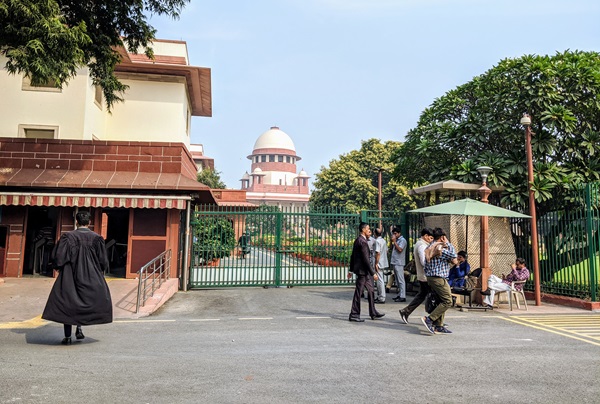.png)
For Export To US, Make In India Has To Truly Be Made In India
To benefit from US tariffs and boost exports, Indian firms must go beyond surface-level assembly and meet stringent Rules of Origin norms.


By Ajay Srivastava
Ajay Srivastava, founder of Global Trade Research Initiative, is an ex-Indian Trade Service officer with expertise in WTO and FTA negotiations.
April 24, 2025 at 3:57 PM IST
As China and the US dig in their heels on tariffs, businesses are beginning to explore newer geographies, including India, to set up production base. However, many of these moves are just shortcuts—companies setting up basic assembly lines without developing full-scale industrial ecosystems from the ground up.
This limited approach risks violating the crucial Rules of Origin, leading to potential long-term reputational damage. Indian firms would be wise to steer clear of this superficial approach.
A more viable strategy involves establishing robust production hubs in India, where imported Chinese components or intermediate goods undergo substantial processing before export. Through genuine transformation—such as detailed assembly, integration, programming, or design—firms can legally and competitively access the US market while adhering to origin regulations. This model is gaining traction in sectors including garments, toys, steel products, electronics, furniture, kitchenware, and auto parts.
However, these operations face a critical challenge.
Accessing lower US tariffs depends not merely on the country from which goods are shipped, but where they are genuinely manufactured. This is where the US Non-Preferential Rules of Origin become essential, which determine a product’s true origin when there is no trade agreement between the US and the exporting nation.
If a product includes significant Chinese inputs without meeting US origin standards, it risks being classified as Chinese-origin, thus facing higher tariffs, even if shipped from India.
With the US imposing varying tariffs across countries, adherence to these origin rules has become vital for all imports. Indian exporters must understand these rules thoroughly to avoid shipment delays, fines, or unexpected tariff increases. Rules of Origin essentially determine where a product is genuinely made—not the last country it transited through, but the country where significant transformation into a new product occurred.
The US Customs and Border Protection employs two principal tests to establish origin. One test assesses whether a product is entirely grown, mined, or produced in a single country, such as harvested fruits or mined minerals. The other deals with substantial transformation; for manufactured items, the process undertaken must impart a new name, usage, or character to the product. Basic assembly, packaging, or labeling alone typically do not qualify.
However, what constitutes "substantial transformation" can often be ambiguous. In such scenarios, the CBP makes the final determination. Exporters must be prepared to justify precisely how and where value addition occurred to prevent their products from being reclassified as Chinese-made, which would attract higher tariffs.
In textiles and apparel, for example, the origin is determined by where the fabric itself is produced—not merely where it's cut or sewn. Simply stitching imported fabric into garments may not qualify these items as originating from the sewing country. Similarly, in smartphones and laptops, origin depends on where critical components such as motherboards or logic boards are assembled and programmed. Mere assembly of these devices in a country might not be sufficient if key programming or core production is done elsewhere.
For pharmaceuticals—one of India’s significant export categories to the US—changing the chemical structure determines origin. Merely converting an imported Active Pharmaceutical Ingredient into tablets doesn't constitute sufficient transformation if the core chemical structure remains unchanged.
Many products, particularly electronics, chemicals, and solar cells, that rely heavily on Chinese intermediate goods, risk being relabeled as Chinese if sufficient domestic value isn't added.
To fully comply with US regulations, Indian firms must carefully map and audit their supply chains to identify foreign content clearly. Manufacturing processes must be redesigned to ensure substantial domestic transformation of key inputs, and firms should maintain rigorous documentation, including detailed invoices, clearly recorded production steps, and explicit origin declarations.







